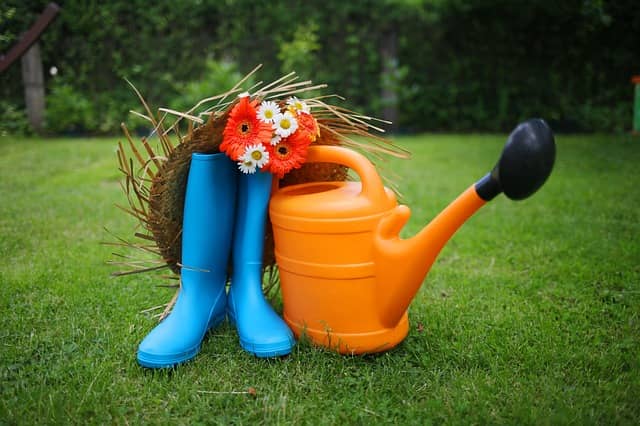Tips for watering plants and saving water
These are some tips on how to water plants correctly and make conscious use of water, which is becoming increasingly scarce in a number of communities.

The beginning of summer brings with it temperatures that in some areas of Mexico are dangerous, not only for human health but also for plants and animals. Today, Professor Alberto Sánchez Estrada, from the Center for Research in Food and Development (CIAD), shares tips for watering plants correctly and making conscious use of water, which is becoming scarcer every day in different communities.
When is it best to water plants?
In the first instance, it is necessary to emphasize that, if we refer to intensive farming crops, the best time to water is during the morning, which is when the crop has the highest transpiration rate (the water that passes through the internal system of the plant and exits through specialized cells called stomata); however, this time is also when more water is consumed since the heat of the morning causes greater evapotranspiration. Therefore, in medium and large-scale agriculture, it is necessary to upgrade irrigation systems to minimize water loss and ensure that the plants use more of the vital liquid.
In the case of ornamental garden plants, it is recommended to irrigate at night, which is when there is less evaporation so that usable water is available for a longer period of time.
How do I know how much water my plant needs?
This question cannot be answered conclusively, since there is no system that indicates exactly how much water a plant needs, due to the fact that, among others, factors such as the characteristics of the soil and its capacity to retain water, as well as the climate, are involved. However, in the scientific field there is a technique (oriented to intensive cultivation) called "consumptive use", which determines the amount of water that a plant needs physiologically to finish its life cycle correctly and productively; however, he said, this value is not determined in many crops and there are only trial and error approaches to determine the amount of water.
If we talk about home gardening, we can establish that the amount of water required by ornamental plants is the amount needed to keep the plant alive, healthy, and looking good.
Our plants give us signs
There are certain signs that we can pay attention to in order to take better care of our plants, one of them is to check if the pot leaks water, as this may mean that the substrate does not retain the liquid; therefore, it is necessary to place clay inside the pot. If once we have added the clay, the pot has abundant water at the bottom, it means that it is being overwatered and, therefore, water is being wasted. A sign of proper watering is not having excess water at the bottom of the pot.
Other unmistakable signs of lack of water in a plant are that it looks sad, wilted, chlorotic (green turns yellow), and its flower or fruit production drops drastically. It is also possible that it grows very slowly or not at all, and that the leaves fall off until it dries up completely and dies.
Tips to improve plant hydration
The CIAD researcher advised to take into account the following considerations to use domestic water for more efficient irrigation:
Procure a substrate with adequate levels of sand, silt, clay, and organic matter that allows retaining water, this can be obtained in nurseries.
Reduce the area of the lower holes of the pot; it is important that they do not become totally obstructed and cause rotting of the roots.
Capture in a container, through the lower holes, the water that has passed through a pot, with the purpose of reusing it for watering another plant.
Place the plant appropriately to the size of the pot (do not put small plants in large pots).
To elaborate a pot or structure of culture that works like a cascade, that is to say, where the water that is poured in pot filters through the inferior orifices and falls in another one, and so on successively.
The most important thing to consider, from the beginning, is that the ornamental plant does not require a lot of water, that is to say, that it is from the region, because, for example, a tropical plant would require a lot of water in a desert area.
Finally, gardening, as a hobby, is a very exciting and rewarding activity, so it is recommended, in the first instance, to invest a little time (and some money) and use things you have at home such as PVC pipes, hoses, glue, various accessories and, on a plan on paper, make the designs that you plan to adapt to the final work. "On the internet, mainly on Youtube, there is enough information and ideas to make home irrigation systems with different technological levels and suitable to the needs of each person", concluded the researcher.
Source: Alberto Sánchez Estrada, researcher of the Coordination of Plant-Based Foods of CIAD.




